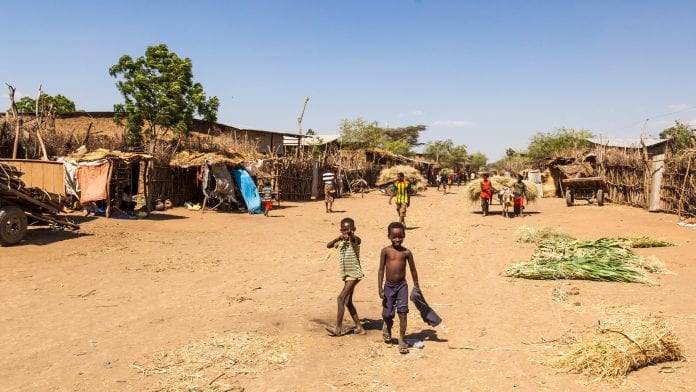
Study find that the rural poor in Ethiopia usually live near lower-quality food markets that sell fewer food groups at high prices, adversely impacting child health in these communities.
Researchers at the International Food Policy Research Institute (IFPRI) demonstrate the first attempt to examine how rural markets vary in their diversity, competitiveness, frequency, and food affordability, and how these characteristics are associated with child health and diet.
Child health in Ethiopia
The study, ‘Rural Food Markets and Child Nutrition,’ co-authored by IFPRI’s Derek Headey and Kalle Hirvonen; Cornell University‘s John Hoddinott, and Lafayette College‘s David Stifel, was published in the American Journal of Agricultural Economics. It used an innovative longitudinal survey of both households and food markets in some of the poorest areas of rural Ethiopia.
IFPRI’s senior researcher Derek Headey, co-author of the study explains: “Despite some improvements in recent years, the quality of child diets in rural Ethiopia is still shockingly poor, especially in our survey areas where most children just eat basic staples and not much else.”
“But the touted solution to this problem has always been farm-level diversification, with little policy focus or research on the physical markets where even poor people obtain most of their non-staple foods. That’s where our study came in.”
The researchers used these data to assess which of the seven food groups recommended by the World Health Organization (WHO 2008) were consumed by young children, and then evaluated whether local food markets sold these foods and at what cost.
What was discovered?
“We found a statistically significant association between the number of non-staple food groups available in the market and children’s consumption of non-staple food groups, and this association exists after controlling for a wide range of factors,” Hirvonen said.
While rural Ethiopia is agriculturally diverse, the study sites are all situated in poor, food-insecure localities where even the relatively better off are poor in absolute terms. Prices for non-staple foods in almost all survey sites were high: on an average, the cost of a calorie from a non-staple food is 12 times higher than a calorie from the cheapest staple.
“Those findings suggest that poverty and high prices are major constraints on the ability of markets to improve rural diets,” adds Stifel.
“Access to healthy foods is not the only problem”
“Our results make us cautious about the likely effects of farm-level diversification programs because access to healthy foods is not the only problem. We do, however, find some indirect evidence that dairy and fruit and vegetable promotion might improve children’s consumption of these products specifically,” Hoddinott said.
“And some relatively nutritious foods, such as legumes, nuts, and some fruits and vegetables, are relatively affordable, and perhaps underappreciated by parents with limited nutritional knowledge.”
Ultimately, the findings suggest that sizeable improvements in rural diets depend on improved access to high-quality markets that deliver a wide array of healthy foods at affordable prices.
“The agricultural foundations of better rural markets likely stem not from increased specialisation at the farm level but from diversification at the food system level, resulting in even greater dependence on markets for both agricultural sales and food purchases in the long run,” Headey said.
“How best to accelerate the development of higher quality rural food markets is a critically important area for future research.”









